What Are the Different Types of HVAC Systems?
A question a homeowner will be faced with when dealing with this question is difficult to answer. Especially when only having to deal with this every 10 plus years. It’s a big investment and locks a homeowner to the decision typically for the life of HVAC systems.

What are the different parts of HVAC systems and what do they do?
- Furnace
- Evaporator coil
- Condenser
- Thermostat
- Heat pump
- Air Handler
- Mini-split
- VRF – Variable refrigerant flow
- Conventional Straight AC/ split system
- HVAC systems
- Connected Home/ Smart Home
- New system replacement
- Partial replacement
- Ductwork
Furnace
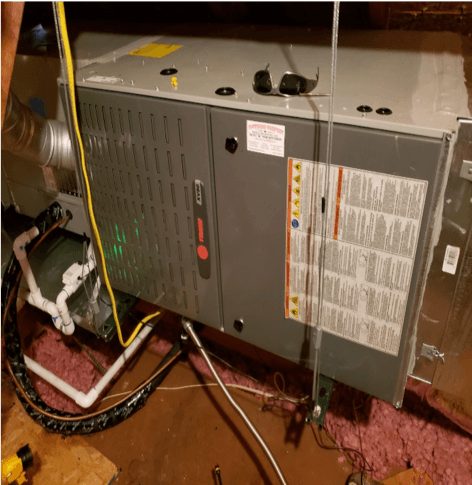 The furnace, which is typically located in the attic of a Texas home, is one of the metal boxes. The furnace works all year round. The furnace contains two main components for your HVAC system. In addition, if you’re looking for help with your furnace in Carrollton – call our experts today!
The furnace, which is typically located in the attic of a Texas home, is one of the metal boxes. The furnace works all year round. The furnace contains two main components for your HVAC system. In addition, if you’re looking for help with your furnace in Carrollton – call our experts today!
The gas burners are used to create heat. These are a row of gas nozzles that burn gas when triggered. The number of gas nozzles depends on the size of the unit. Typically, two on the smaller units and up to 4 on the larger units.
The blower, which works all year-round. This part of the unit blows air across the heat exchanger to heat the air going into your home. Or when your AC is running, it blows air across the evaporator coil to cool it down before going into the house.
There are three different types of furnaces centered around the blower module
- Single-stage: the base level, the blower will only turn on or off
- Two-stage: the blower will have a low and high setting when operating
- Semi variable: The blower has multiple speeds that it can perform at, based on the heating and cooling demands in your home, controlled by your smart thermostat
Variable Speed
The blower will ramp up and down based on the demand for the heating and cooling needs in your home. The unit is continuously adjusting which gives the highest comfort level as there is typically airflow, versus the single-stage when the humidity builds up as a result of the unit is off.
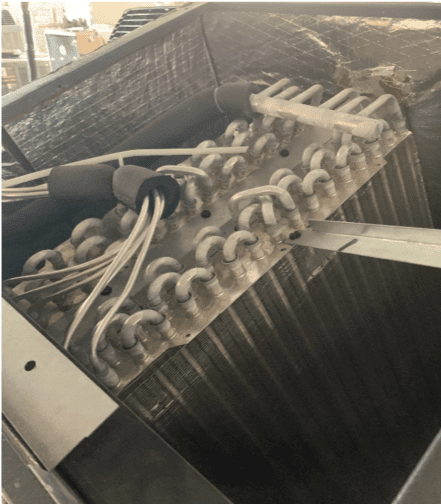
Evaporator Coil
An evaporator coil is like the radiator in your car. When the system is running, air passes through the coil and the surface is chilled by the refrigerant flowing through it. When hot air passes over it, the temperature is reduced by 20 plus degrees F, and moisture/humidity is removed.
The evaporator coil is in the attic attached to the furnace. Evaporator coils are sized with the equipment, so no decision is required by the homeowner as it’s a standard part of the system.
Condensers
A condenser unit is a large unit that sits outside of your home that will make more noise as it ages. The condenser has three main components to it:
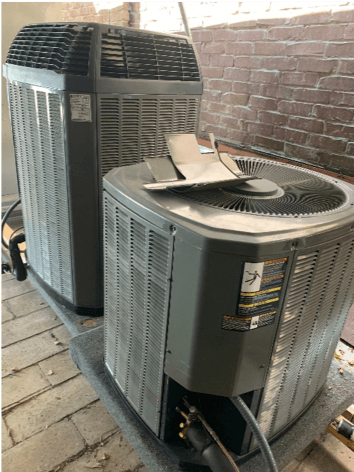
- The compressor, which pumps the refrigerant around the system
- The condenser coil, which transfers heats. This coil is a series of tubes in which the refrigerant flows through it. Attached to the tubes are spines or fins to aid the heat loss process, making the heat transfer more efficient
- The fan, which sucks air across the surface of the coil, to then heat it up and blow it out through the top of the unit. Next time you stand by one, place your hand at the side of your unit and feel the air temperature as well as the airflow. Then place your hand over the top. You should feel hot air blowing out
There are a few different types/options when it comes to condensers
Single-stage: the unit will either be on or off. When the indoor temperature gets above the target set at the thermostat, the unit switches on and runs until the target cooling temperature is reached.
Two-stage: the unit has two levels of cooling capability when the home heats up and cooling is needed. The unit starts in the first stage, roughly 60-70% of its capacity. If the thermostat determines it needs more cooling capacity the unit will go into the 2nd stage or 100% of its capacity. The first stage is designed to give energy efficiency and sufficiency for a large part of the year. The second stage is designed to run at the peak of the summer for the days that it is 95 plus degrees.
Variable Speed: this unit is a communicating system that is the most efficient. The compressor speed will ramp up and down to meet the real-time cooling needs of your home. Communicating with the thermostat and the furnace to match refrigerant flow with the airflow needs. As a result of the system running at a lower speed for large parts of the time, there is less energy used as the unit is not starting and stopping.
Thermostats
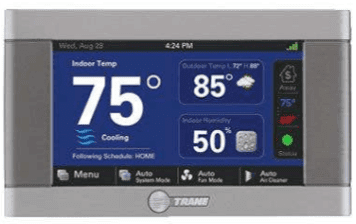 There is a large variety of thermostats. Starting with basic temperature control to a more elaborate WiFi-connected one. A basic thermostat has a 5-day schedule and temperature controls with push buttons. The next tier of thermostats has a 7-day schedule as well as a touch screen. The third tier is the WiFi-connected thermostat which allows the homeowner some capability to control the thermostat remotely from a smartphone or tablet.
There is a large variety of thermostats. Starting with basic temperature control to a more elaborate WiFi-connected one. A basic thermostat has a 5-day schedule and temperature controls with push buttons. The next tier of thermostats has a 7-day schedule as well as a touch screen. The third tier is the WiFi-connected thermostat which allows the homeowner some capability to control the thermostat remotely from a smartphone or tablet.
The OEM Thermostat, provided by Trane and Lennox, is specifically designed to operate these brands of units. While you can use a third-party thermostat on these brands, they are generic and designed to operate a broad range of units including Carrier or Goodman. Be advised that there is some loss of functionality and a potential loss of efficiency as well.
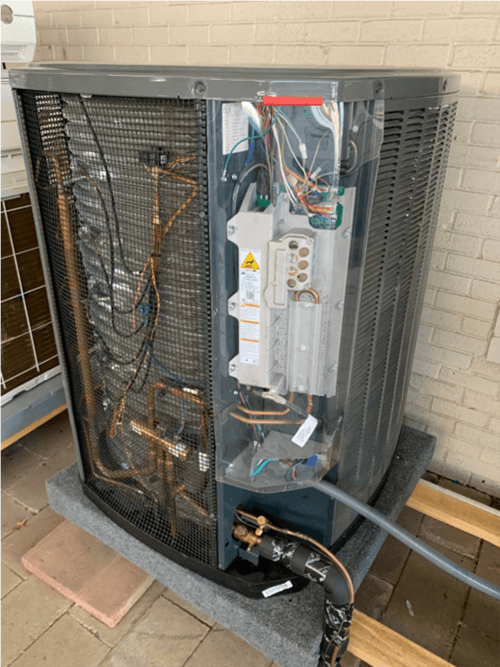
Heat Pumps
A heat pump can reverse the direction of refrigerant it works like a regular HVAC condenser in the summer in cooling mode, while in the winter it changes the direction of flow the unit takes in heat from the outdoor unit and flows it inside the home to the air handler.
Air Handler
An air handler is paired with a heat pump inside is a blower/evaporator coil. In cooling mode refrigerant flows through the evaporator coil, the blower pushes air through the coil and into the home. When in heating mode the outdoor unit is sending hot refrigerant to the evaporator coil. The blower pushes air through the coil which heats it before going into the home. In high heat demand situations, auxiliary heat is added by electric heat strips to boost the air temperature to quickly warm up the home.
Mini-Split
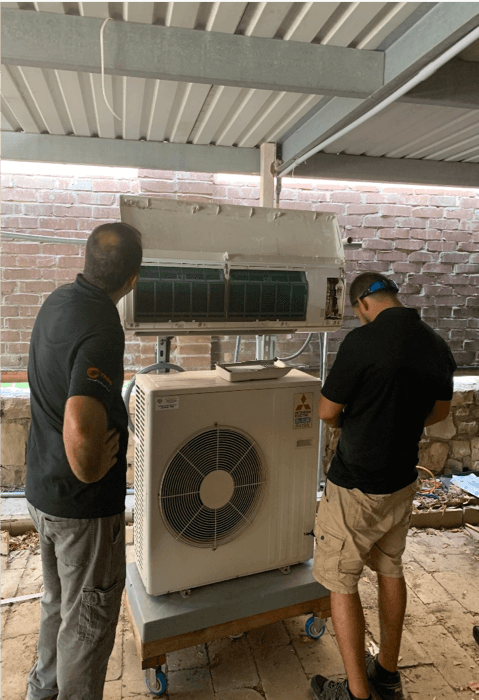 A single head unit typically is used to cool one room like a garage, home office or theatre room. If you have traveled outside the US, you have probably seen them in a hotel or meeting room.
A single head unit typically is used to cool one room like a garage, home office or theatre room. If you have traveled outside the US, you have probably seen them in a hotel or meeting room.
There are two types of condensers for these units. The first being a cooling only unit or and the second being a heat pump version that will allow the system to heat or cool. The indoor unit for a mini-split fits on a wall in the selected space. The basic units are switched on and off via the unit or with a remote. A higher-end unit can be controlled by WIFI remotely.
Some variations also have an occupancy sensor that can turn the unit on or off when someone is in the space. The idea behind a mini-split in your home is to heat or cool one area. When running, they are more efficient than most conventional HVAC systems.
VRF – Variable refrigerant flow
A VRF system in simple comparison is taking a mini-split and applying it to a whole home. With these units, there are two major pieces of equipment. The outdoor unit (condenser) will heat and cool the home. These units have a larger capacity to feed multiple areas in your home. The indoor unit, which comes in 4 different types that can be used to cool and heat a room.
- Wall mount unit
- Floor mount unit
- Ceiling unit
- Air handler
Systems
A conventional straight AC/split system is the typical type that is in most homes and is made up of a furnace, evaporator coil, condenser, and thermostat. A heat pump system is made up of an air handler, thermostat, and outdoor a heat pump. These types of units are used typically when a home does not have a natural gas supply in areas like Argyle and Corinth however, they can be installed in any home.
Connected Home/ Smart Home
At Southern Comfort Mechanical we are familiar with Nexia. The Nexia platform is based on a “Z wave technology” which is the language/wave frequency that devices communicate with each other.
The Thermostat is the core of HVAC systems. Once connected to the Nexia platform, the homeowner can control the thermostat via an app on their smart device. Further enchantments include setting up Geo-fencing, which will allow you to adjust the thermostat temperature when one of your family members are within x miles of the home to ensure optimal temperature.
With the Nexia thermostat connected, other devices can be connected to the Nexia account as well including water sensors, door locks, garage door openers, security cameras, and light/dimmer switches. There are over 150 different devices that can be added to a home to create a customizable smart home for almost any need.
Partial Replacement
When you only want to replace part of your system, for example, the coil and condenser, we refer to this as a partial system replacement. This makes sense if you have purchased a furnace within the last 5 years. Need help with your heater in Frisco, Texas? Call our pros today!










